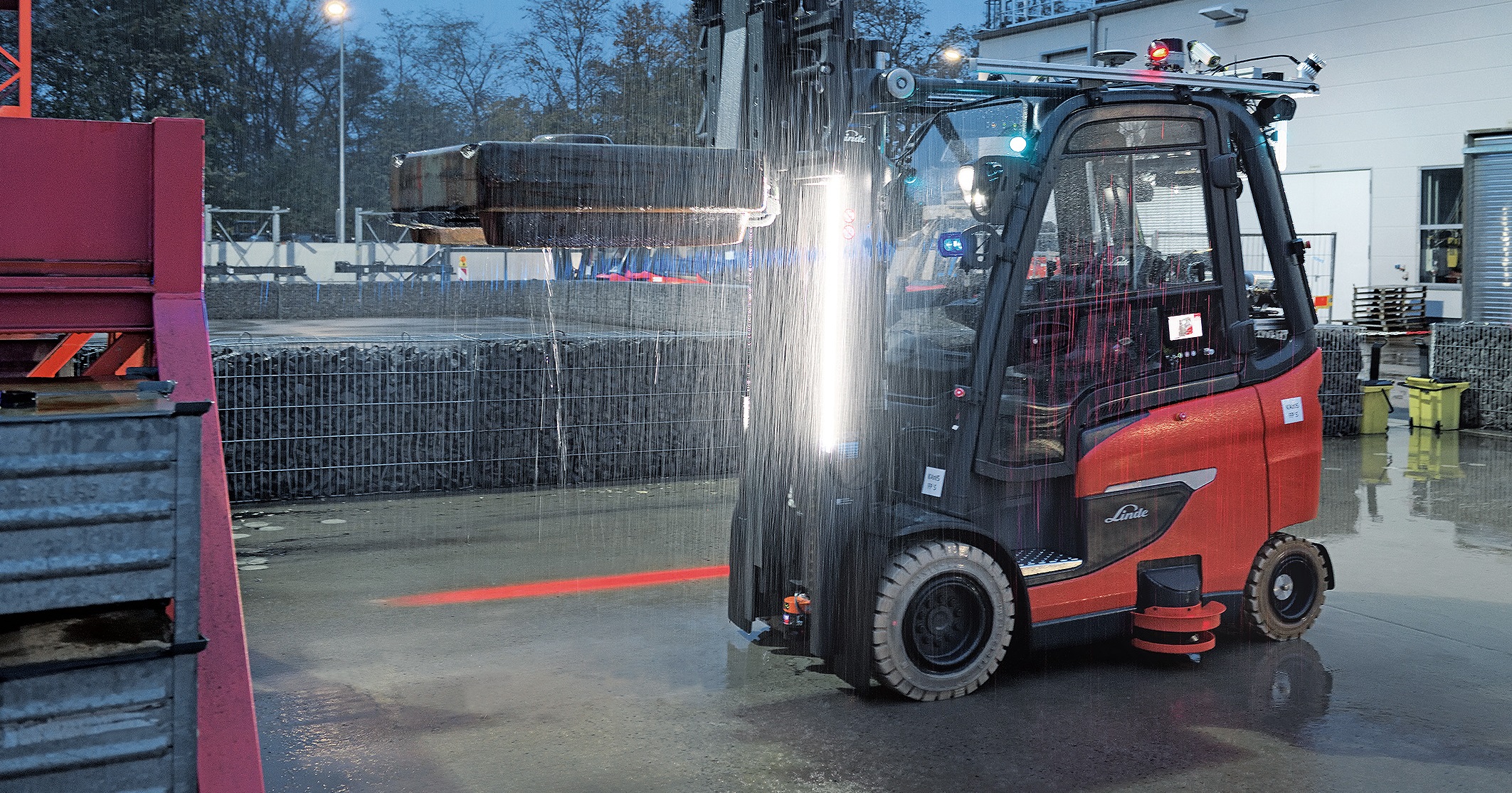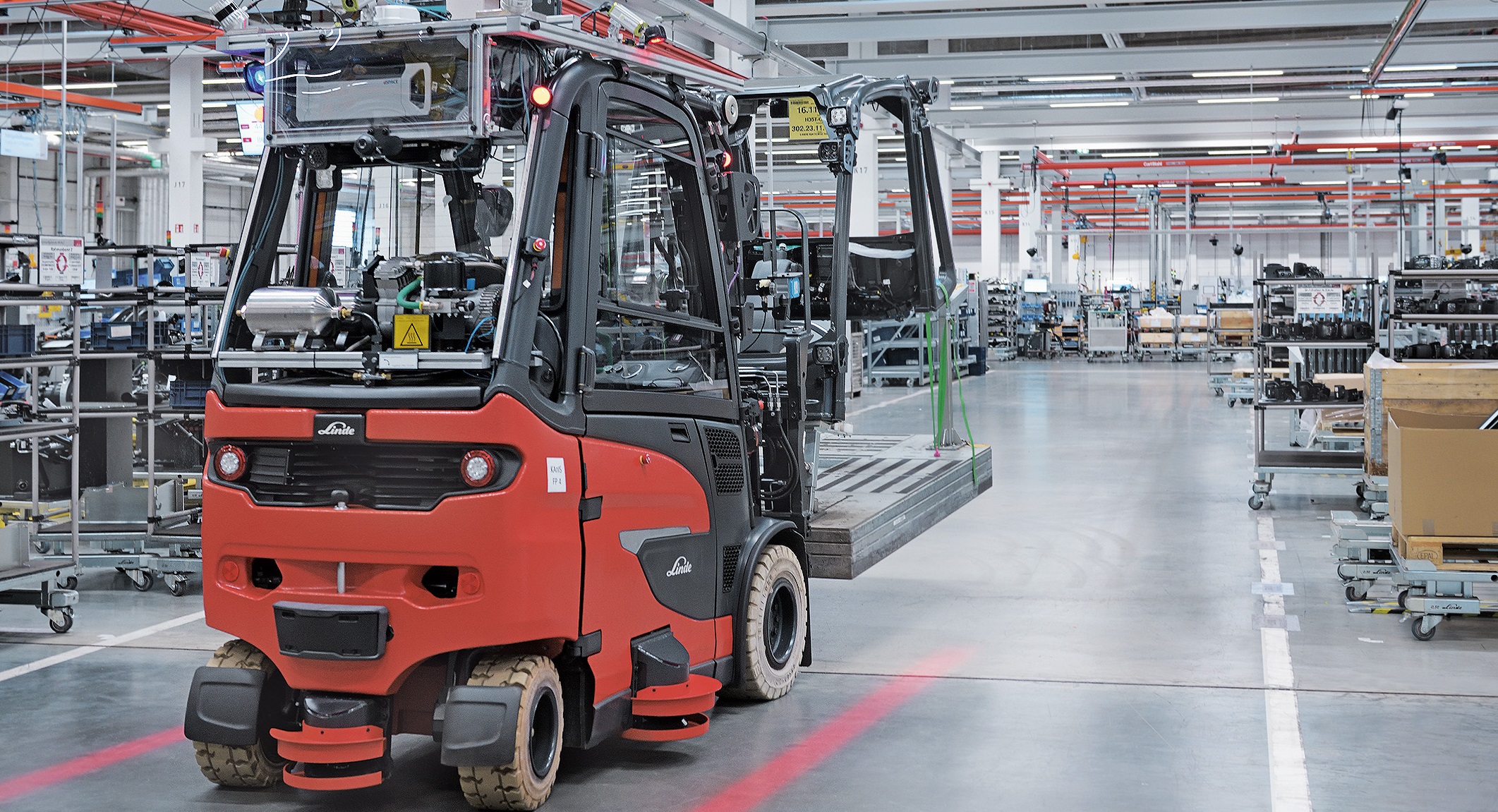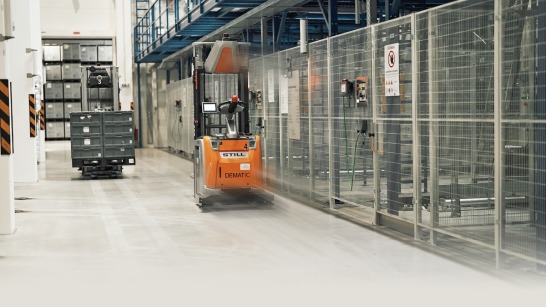The overall goal of the project was to investigate how the cooperative behavior of networked, autonomous vehicles can improve operational reliability and handling performance. To solve this broad task, several subprojects were formed to address vehicle location, regulation and control as well as forklift cooperation, load carrier recognition, the impact of weather influences, predictive maintenance, route optimization and automatic load management.
“For the university, the KAnIS project was a very complex, interdisciplinary research project. Ten professors and numerous research assistants and students were involved,” says Prof. Dr. Hans-Georg Stark, Project Manager KAnIS, Faculty of Engineering at Aschaffenburg UAS.
Practice-oriented test scenarios under realistic conditions
Four Linde E20, E25 and E30 electric counterbalanced trucks with a load capacity of 2.0 to 3.0 tons were automated and equipped with electrohydraulic steering (Linde Steer Control), the Linde Safety Pilot assistance system with electronic load diagram and an integrated fork positioner. Starting next year, the vehicles are to be further developed and tested so that they can perform four specific material handling tasks in the future. These include the transport of wire mesh crates and of pallets containing batteries, and the relocation of vehicle frames and overhead guards, which have to be transported on special load carriers from pre-assembly to the main assembly lines. The first two applications are purely outdoor operations, while the other two require the trucks to travel both inside and between the halls. Gradients of 8 percent have to be overcome, and there are also other AGVs and manually operated vehicles in the halls.



_image_546x307.jpg)
